Abstract
The spatial and temporal response properties of neurones of areas 17 and 18 were studied in single units (165) of anaesthetized and paralysed cats. The visual stimuli were drifting or alternating gratings. We confirmed and extended the observation by Tolhurst & Movshon (1975) showing that the spatial-frequency characteristics of neurones of area 17 are largely independent of the temporal parameters of drifting or alternating gratings. The spatial-frequency tuning curves of neurones of area 18 shift along the spatial-frequency axis when the velocity or the temporal frequency of the drifting grating are changed. The effect of an increase either of velocity or temporal frequency is to shift the cell spatial-frequency tuning curve down the spatial-frequency scale, keeping relatively constant the strength and band width of the response. The spatial-frequency tuning curves of neurones of area 18 do not show this temporal-frequency-dependent phenomenon when the stimuli are gratings alternated in phase. In this case neurones of areas 17 and 18 show a similar behaviour. The response properties of neurones of area 18 are compared with recent psychophysical results obtained in similar experimental conditions. The hypothesis is advanced that both areas 17 and 18 are devoted to the processing of spatial information. Area 17 would be responsible for the processing of patterns in stationary or quasi-stationary situations while area 18 would be responsible for that of patterns moving at high velocities.
Full text
PDF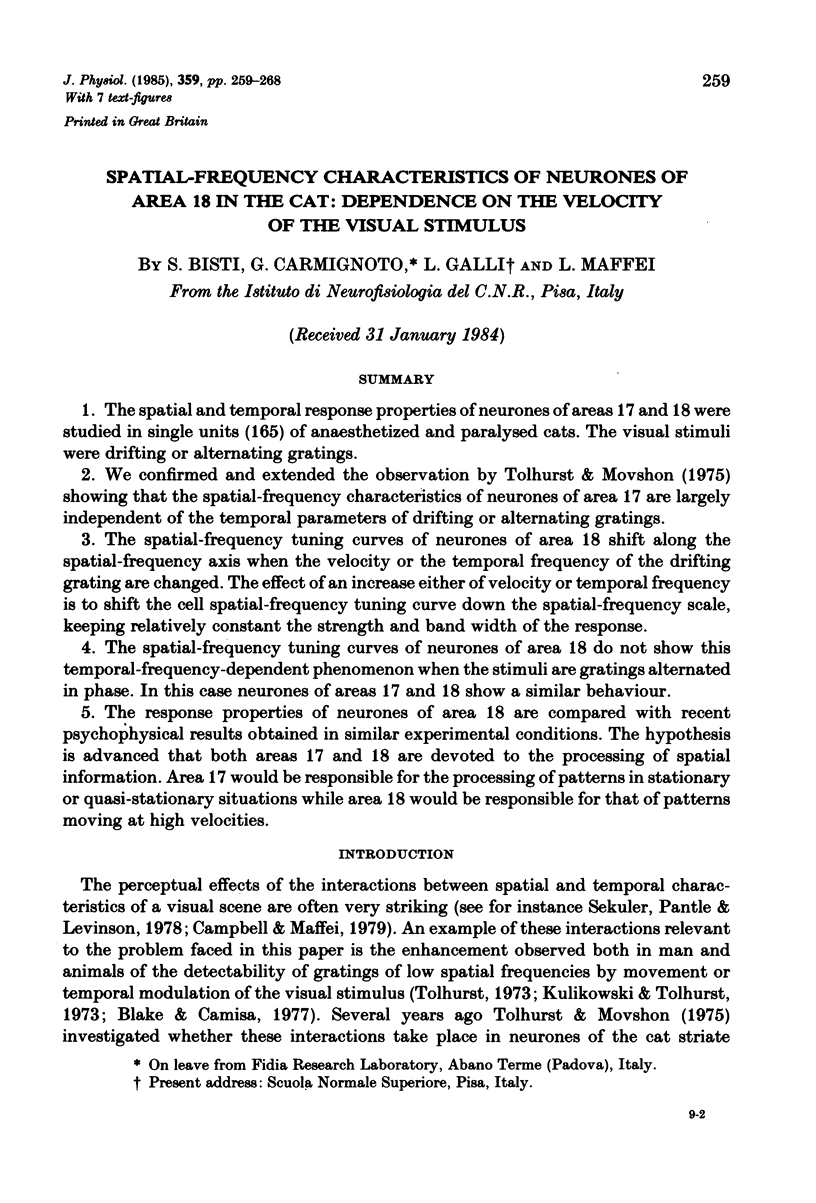
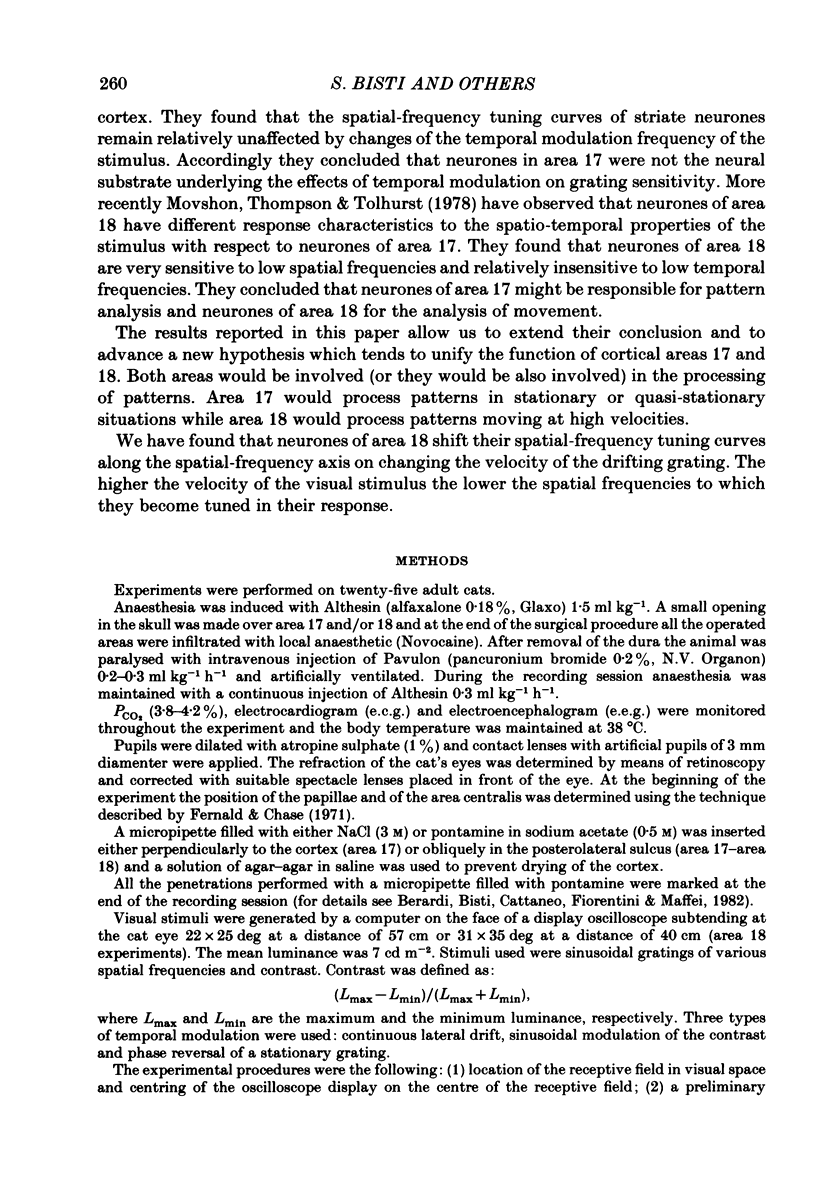
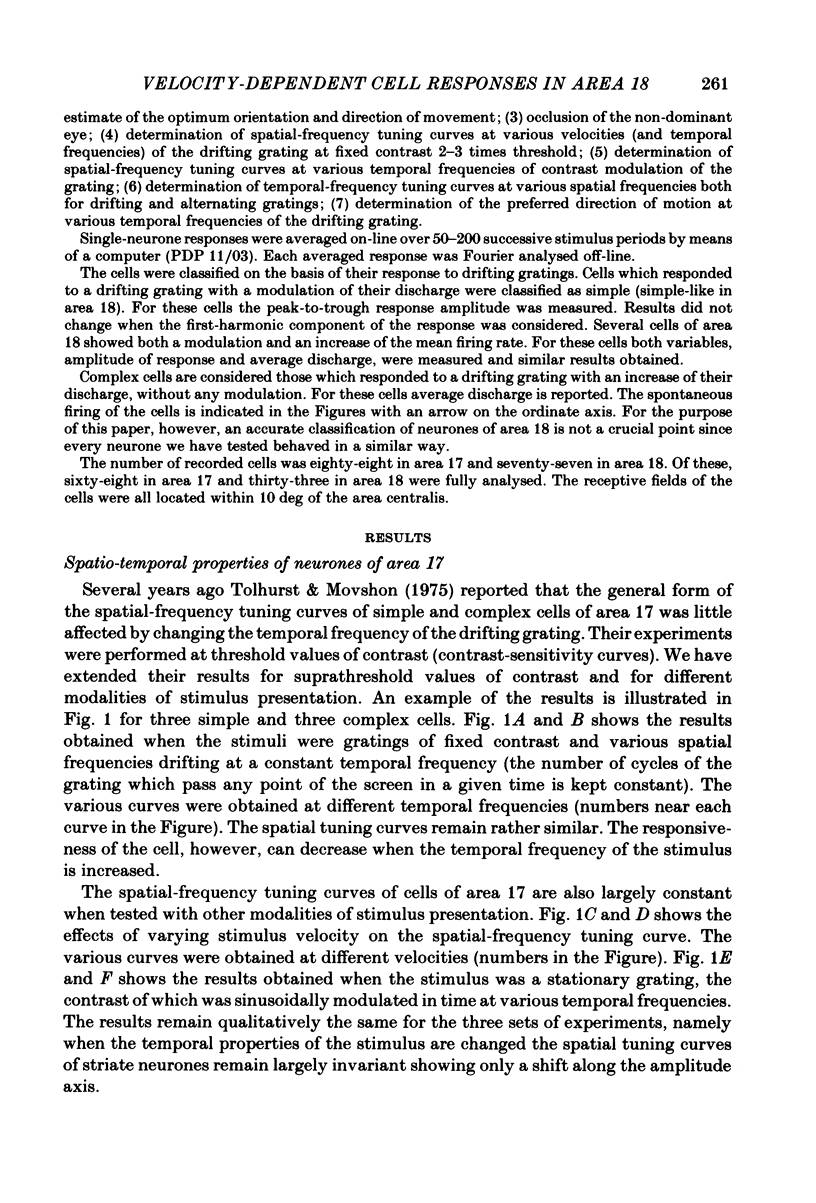
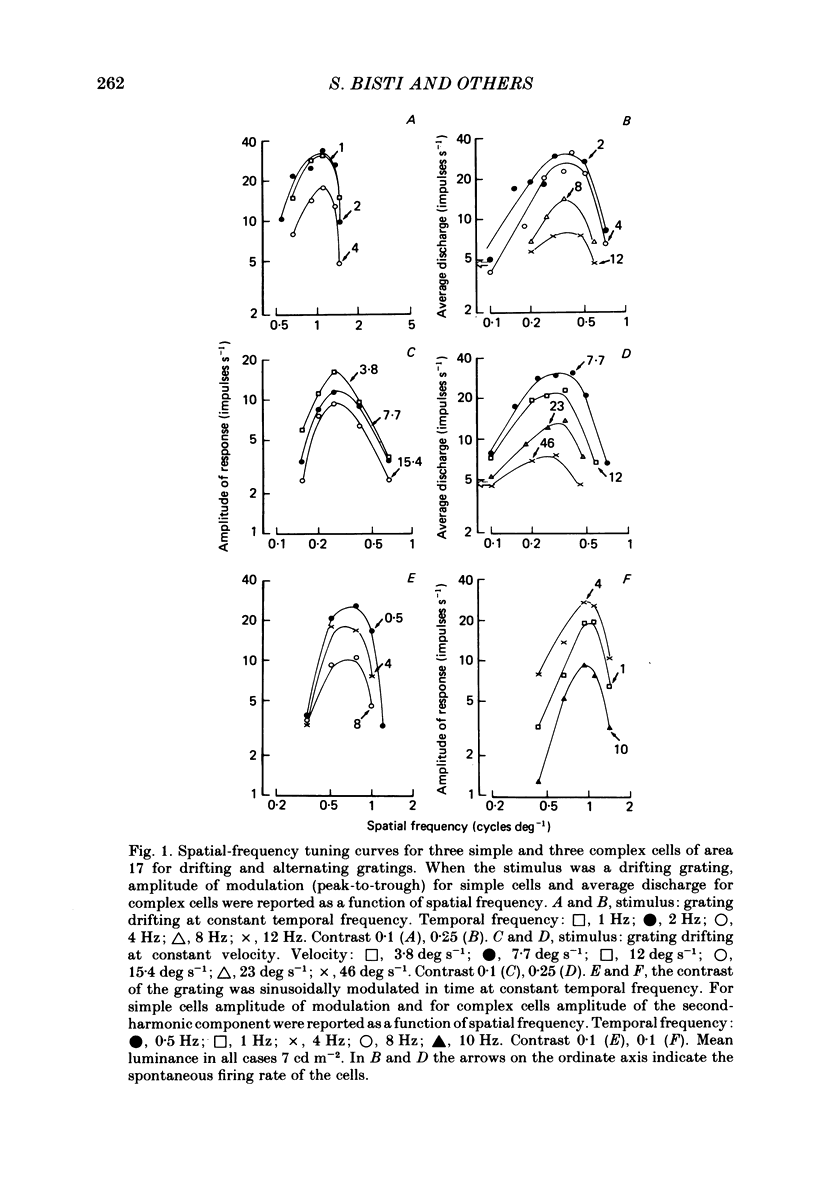
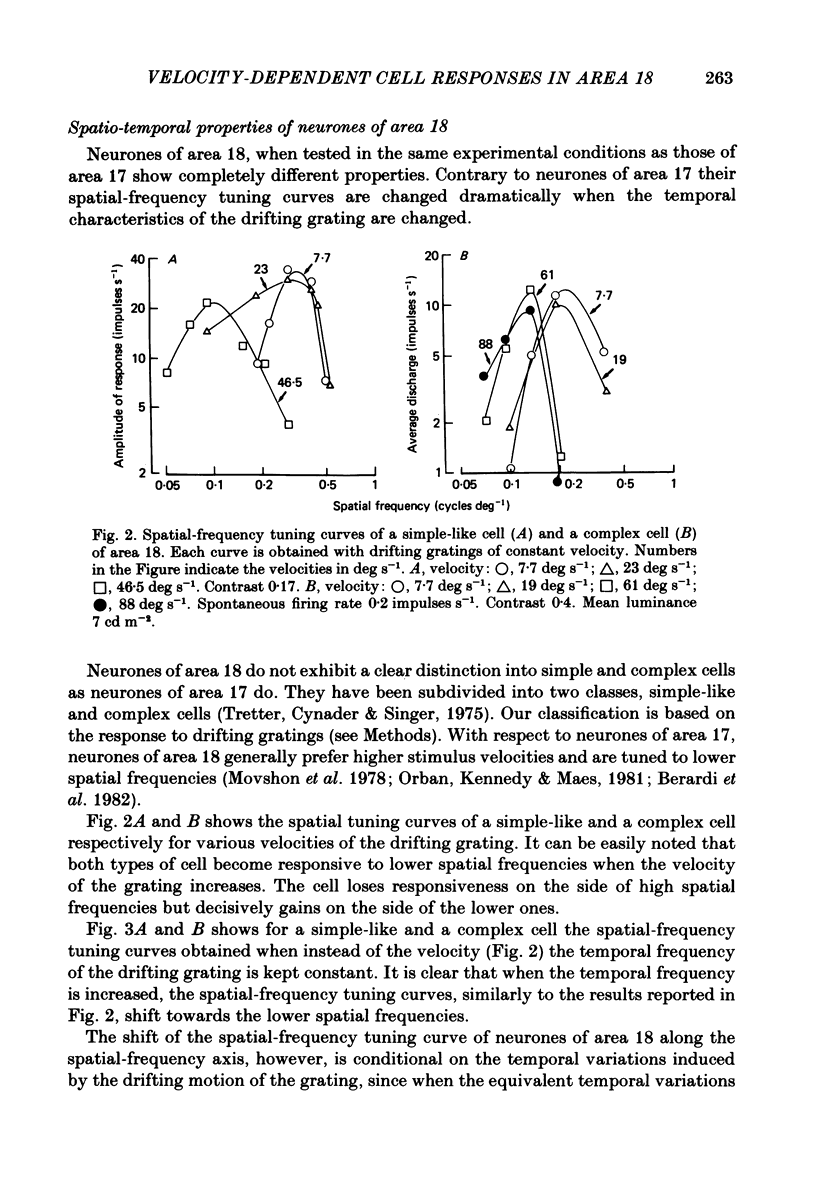
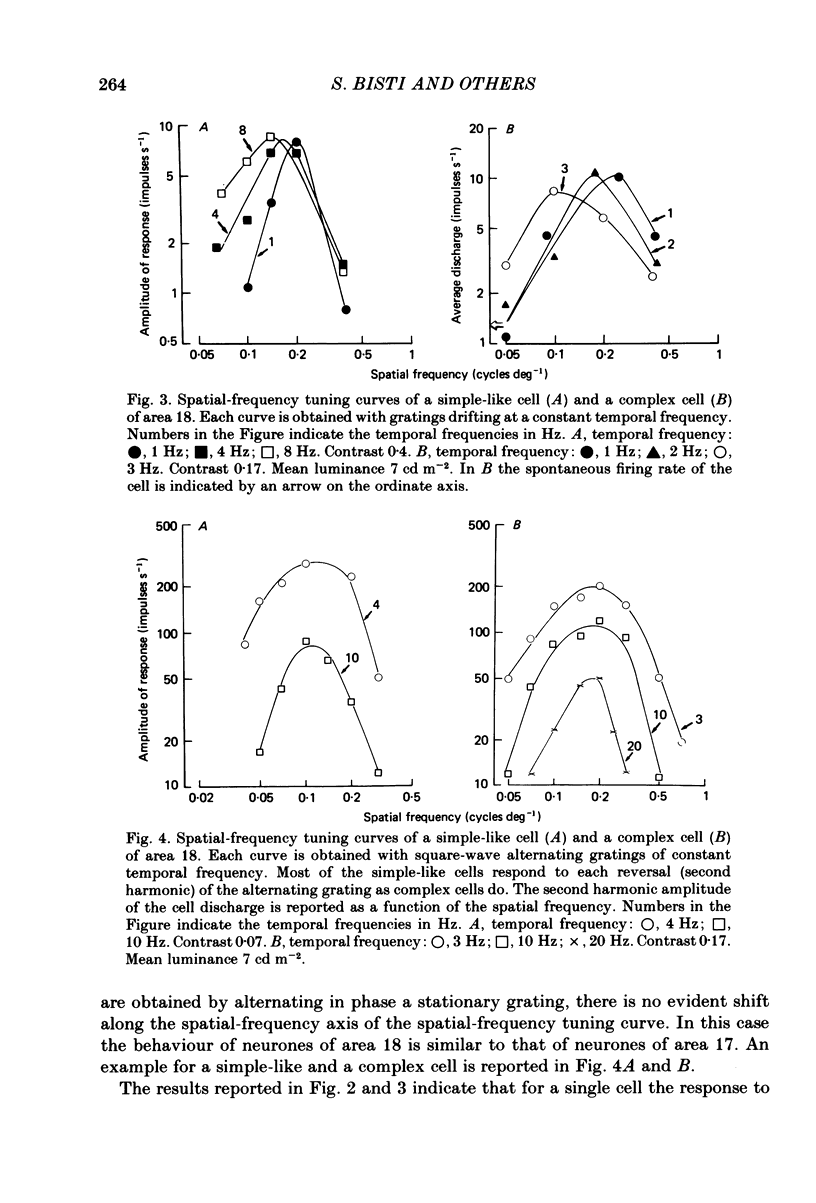


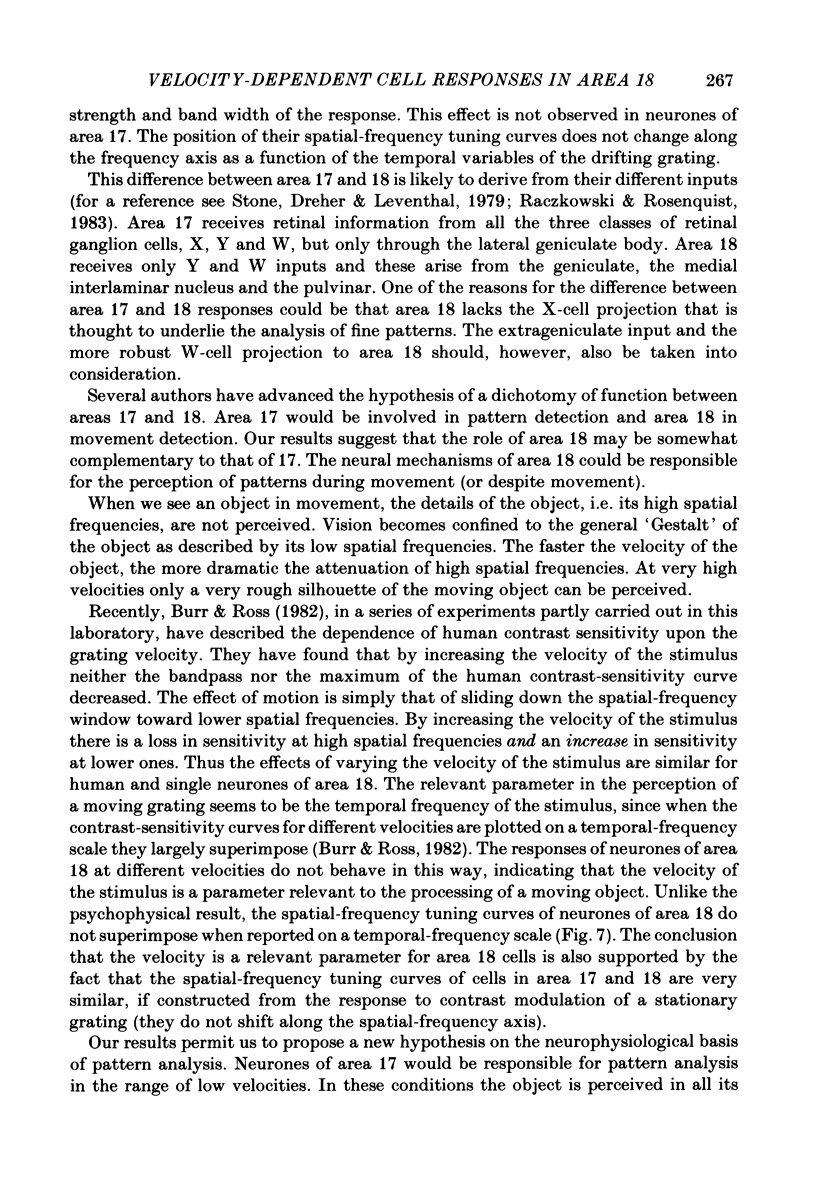
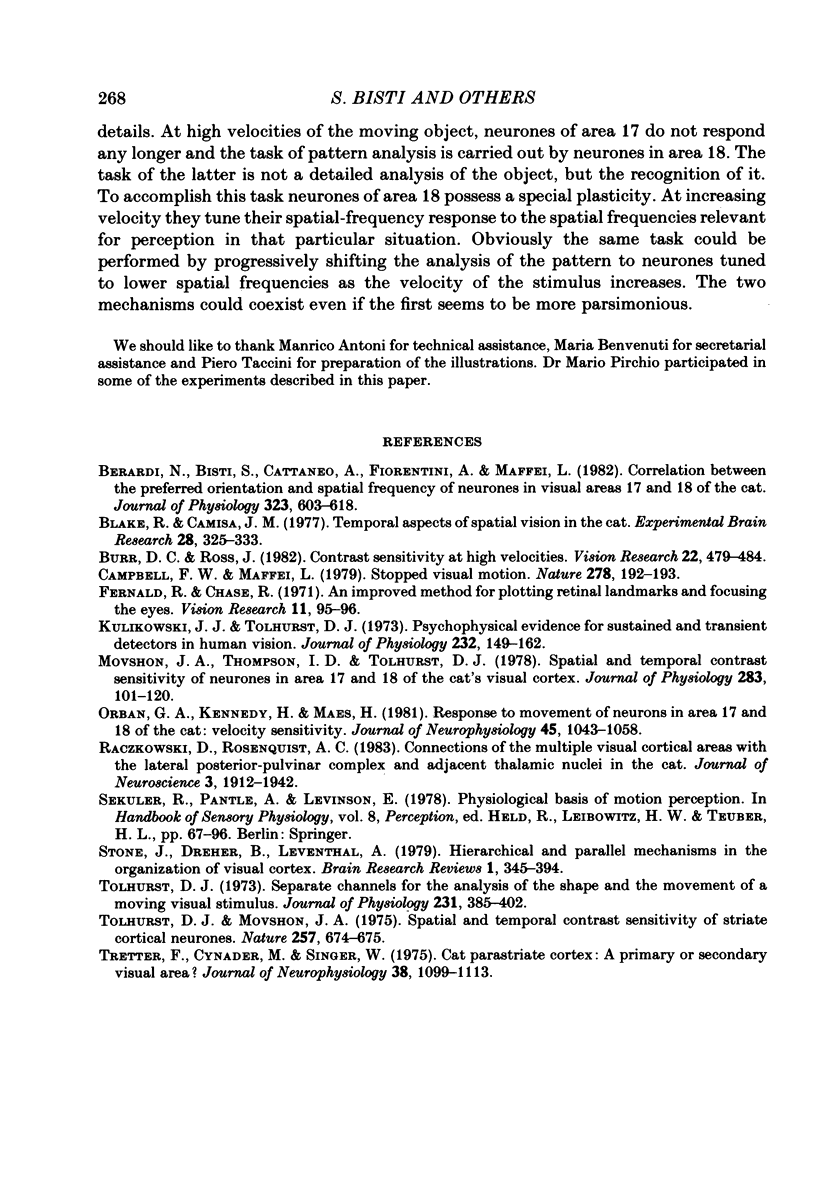
Selected References
These references are in PubMed. This may not be the complete list of references from this article.
- Berardi N., Bisti S., Cattaneo A., Fiorentini A., Maffei L. Correlation between the preferred orientation and spatial frequency of neurones in visual areas 17 and 18 of the cat. J Physiol. 1982 Feb;323:603–618. doi: 10.1113/jphysiol.1982.sp014094. [DOI] [PMC free article] [PubMed] [Google Scholar]
- Blake R., Camisa J. M. Temporal aspects of spatial vision in the cat. Exp Brain Res. 1977 Jun 27;28(3-4):325–333. doi: 10.1007/BF00235714. [DOI] [PubMed] [Google Scholar]
- Burr D. C., Ross J. Contrast sensitivity at high velocities. Vision Res. 1982;22(4):479–484. doi: 10.1016/0042-6989(82)90196-1. [DOI] [PubMed] [Google Scholar]
- Campbell F. W., Maffei L. Stopped visual motion. Nature. 1979 Mar 8;278(5700):192–192. doi: 10.1038/278192a0. [DOI] [PubMed] [Google Scholar]
- Fernald R., Chase R. An improved method for plotting retinal landmarks and focusing the eyes. Vision Res. 1971 Jan;11(1):95–96. doi: 10.1016/0042-6989(71)90207-0. [DOI] [PubMed] [Google Scholar]
- Kulikowski J. J., Tolhurst D. J. Psychophysical evidence for sustained and transient detectors in human vision. J Physiol. 1973 Jul;232(1):149–162. doi: 10.1113/jphysiol.1973.sp010261. [DOI] [PMC free article] [PubMed] [Google Scholar]
- Movshon J. A., Thompson I. D., Tolhurst D. J. Spatial and temporal contrast sensitivity of neurones in areas 17 and 18 of the cat's visual cortex. J Physiol. 1978 Oct;283:101–120. doi: 10.1113/jphysiol.1978.sp012490. [DOI] [PMC free article] [PubMed] [Google Scholar]
- Orban G. A., Kennedy H., Maes H. Response to movement of neurons in areas 17 and 18 of the cat: velocity sensitivity. J Neurophysiol. 1981 Jun;45(6):1043–1058. doi: 10.1152/jn.1981.45.6.1043. [DOI] [PubMed] [Google Scholar]
- Raczkowski D., Rosenquist A. C. Connections of the multiple visual cortical areas with the lateral posterior-pulvinar complex and adjacent thalamic nuclei in the cat. J Neurosci. 1983 Oct;3(10):1912–1942. doi: 10.1523/JNEUROSCI.03-10-01912.1983. [DOI] [PMC free article] [PubMed] [Google Scholar]
- Stone J., Dreher B., Leventhal A. Hierarchical and parallel mechanisms in the organization of visual cortex. Brain Res. 1979 Dec;180(3):345–394. doi: 10.1016/0165-0173(79)90010-9. [DOI] [PubMed] [Google Scholar]
- Tolhurst D. J., Movshon J. A. Spatial and temporal contrast sensitivity of striate cortical neurones. Nature. 1975 Oct 23;257(5528):674–675. doi: 10.1038/257674a0. [DOI] [PubMed] [Google Scholar]
- Tolhurst D. J. Separate channels for the analysis of the shape and the movement of moving visual stimulus. J Physiol. 1973 Jun;231(3):385–402. doi: 10.1113/jphysiol.1973.sp010239. [DOI] [PMC free article] [PubMed] [Google Scholar]
- Tretter F., Cynader M., Singer W. Cat parastriate cortex: a primary or secondary visual area. J Neurophysiol. 1975 Sep;38(5):1099–1113. doi: 10.1152/jn.1975.38.5.1099. [DOI] [PubMed] [Google Scholar]


